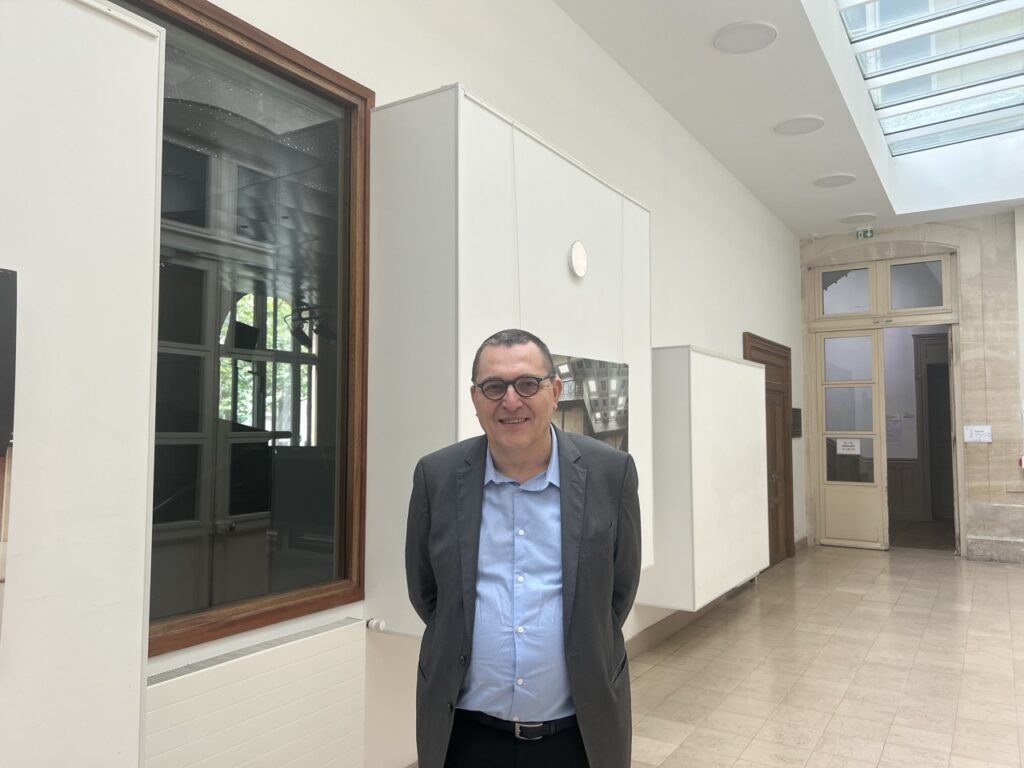Anaerobic digestion as a new source of income for farmers
[ad_1]
The deeptech startup SUBLIME Energie, from the Center Énergie Environnement Procédés (CEEP) at Mines Paris-PSL, is poised to transform the valorization of biogas with a unique innovation in the world: the liquefaction of biogas directly on the farm. This advance promises to significantly reduce operating and investment costs for farmers, while opening new prospects for the production of biomethane and bioCO2.
Biogas production, a potential that has so far been underexploited
Currently, more than 80% of the world’s biomass is held by farmers. However, the development of the methanization sector is hampered by the limited profitability of existing technologies and the distance between biogas production sites and their places of consumption. Historical methods, such as cogeneration, offer limited yield, while the injection of biomethane into gas networks is expensive and requires significant flow rates, thus excluding many farmers. SUBLIME Energie offers an innovative solution adapted to low biogas flow rates, making this technology profitable and accessible to a greater number of farms.
Interview with Bruno Adhemar, Co-founder and President of Sublime Energie

Q: Can you introduce Sublime Energie?
A: Sublime Energie is a mission-driven company, the first in France, founded in 2019. Coming from the École des Mines de Paris, this industrial deep tech startup offers a new economic model of on-farm methanization, enabling small farms far from rural areas. gas networks to access methanization thanks to a world first: the liquefaction of biogas.
Q: What is your technological innovation?
A: Our major innovation is the liquefaction of biogas, composed mainly of methane and CO2. This process is carried out directly on the farm after pre-treatment to remove H2S, water and CODs. The remaining mixture, methane and CO2, is then liquefied and transported to a hub where the biomethane and biochemical CO2 are recovered.
Q: What are Sublime Energie’s recent fundraisings?
A: We raised funds at the end of December to finance our technological maturation over three years. This includes the creation of a prototype capable of producing around 200 tonnes of bioLNG and 350 tonnes of biochemical CO2 per year.
Q: What is the potential market for your technology?
A: In France, we estimate that around 10,000 farms are capable of accommodating a methanizer. Our goal is to connect around a hundred farms and around ten hubs by 2031-2032, with a production of 30,000 tonnes of bioLNG.
Q: What is Sublime Energie’s economic model for farmers?
A: Our business model is designed to be fair, minimizing costs for farmers. For those who already have a methanizer, the necessary adaptations are minimal because we buy the biogas. For new installations, the investment for farmers in biogas production is estimated between 1 and 1.5 million euros.
Q: How did the project start?
A: The project began in 2018 thanks to the “deep tech entrepreneur” master’s degree from the École des Mines de Paris. The discovery of methanization and the needs of farmers led us to design the liquefaction of biogas to facilitate its transport and use.
Q: What are the regulatory issues for Sublime Energie?
A: The regulatory framework in France is generally favorable. However, a specific decree for non-injected biomethane intended for mobility is still pending. Recently, biomethane was included in the incentive criteria for the use of renewable energy for transport.
Q: How do you see your role in relation to electric mobility solutions?
A: We position ourselves as a complement to electric mobility solutions, particularly for long-haul trucks and large tractors that cannot easily be powered by electricity or hydrogen.
Q: What patents do you hold for your technology?
A: We hold two patents: one for the supply of biogas allowing its transport, and the other for the separation of the biogas mixture into methane and CO2 with high levels of purity.
Q: What are the next steps for Sublime Energie?
A: Our first communication on a major innovation took place in March. We plan to commission our pilot in the Côtes d’Armor in 2025, with a pioneer operator in methanization.
Why is this an opportunity for farmers?
The energy transition is a global priority, with Europe leading initiatives to decarbonize by 2050. One of the promising solutions in this transition is the use of biomethane, a renewable gas produced by the methanization of organic materials, such as as livestock effluent. This technology has several advantages for farmers.
Valorization of Agricultural Effluents and Waste
Anaerobic digestion allows farmers to recycle livestock effluent and other agricultural waste. By transforming these materials into biogas, farmers can produce a renewable energy source while reducing the nuisance associated with waste management. Alain Guillaume, a retired farmer, illustrated this opportunity during his speech. He mentioned that the exploitation of biogas allows better management of resources and a reduction in environmental pollution, such as green algae in Brittany.
Economic profitability
Although biomethane production is initially more expensive than natural gas, the positive externalities (social and environmental) can make this solution economically viable. Anaerobic digestion offers farmers an additional source of income. Alain Guillaume specified that the implementation of methanization on his farm had enabled better recovery of his effluent and a reduction in costs linked to the purchase of chemical fertilizers.
Energy Autonomy
The production of biomethane can also contribute to the energy autonomy of agricultural operations. The Energy Methanization Nitrogen Autonomy Plan (EMA) aims to encourage this autonomy by using digestate (residue from methanization) as a natural fertilizer. This reduces dependence on external inputs and promotes more sustainable and resilient agriculture.
Social and Environmental Acceptability
Anaerobic digestion is well accepted socially and environmentally, especially when it reduces the transport of effluents and therefore greenhouse gas emissions. On-site methanization installations, rather than collective ones, avoid the loss of methanogenic potential of effluents due to transport, thus increasing the efficiency of biogas production.
[ad_2]
Source link
